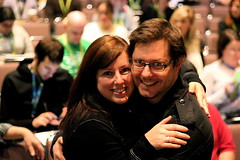 Wow, Bryce and W.R. and Veronica and Sadie are all moving to Seattle. Bryce announed yesterday his big, exciting news. Bryce is joining the Microsoft Dynamics team as a User Experience Designer. This is phenominal and sad. As a Microsoft shareholder, the value of the company has increased. Bryce has done fantastic user experience design for enterprise software deployments for many years at Navantis. He has helped solve complex business rules and software conditions for clients like the City of Hamilton, Microsoft Canada, and others.Bryce will join a contingent of Canadians in Redmond including:
Wow, Bryce and W.R. and Veronica and Sadie are all moving to Seattle. Bryce announed yesterday his big, exciting news. Bryce is joining the Microsoft Dynamics team as a User Experience Designer. This is phenominal and sad. As a Microsoft shareholder, the value of the company has increased. Bryce has done fantastic user experience design for enterprise software deployments for many years at Navantis. He has helped solve complex business rules and software conditions for clients like the City of Hamilton, Microsoft Canada, and others.Bryce will join a contingent of Canadians in Redmond including:
However, it is also a sad day. Bryce is leaving Toronto (Toron-o, watch the video for details). Bryce was one of the driving forces behind InteractionCamp and EnterpriseCampToronto. He is a co-conspirator with Kaleem, Matthew, Audrey, and me for the UXIrregulars. Bryce has been a tireless support of the community efforts and a great friend to have a bourbon or two with.
Congratulations Bryce! Microsoft is lucky to have a designer of your calibre in their cadre.

